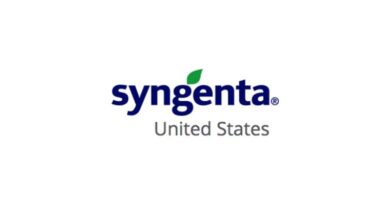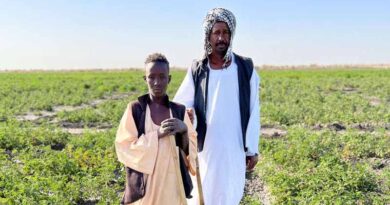Bayer Seeks Reapproval of Pesticide That Federal Courts Have Twice Banned for Causing Widespread Damage to Crops and Communities
08 May 2024, Washington: Pesticide-maker Bayer has asked the Environmental Protection Agency (EPA) to re-approve the dangerous pesticide dicamba for use on genetically engineered (GE) cotton and soybeans.
The request comes after two different federal courts vacated the registrations of the drift-prone weedkiller — one in 2020 and the other in February 2024. Dicamba drift has damaged millions of acres, including croplands, home gardens, forests, and even wildlife refuges. Notably, neither EPA nor dicamba registrants appealed the 2024 court decision, which is now final. In an “existing stocks” order, EPA prohibited any sale or distribution of dicamba not already in channels of trade as of February 6th of this year.
Due to a 17-month review of this new application, dicamba use on GE soybeans and cotton may well remain prohibited for the 2025 crop season.
Overall, the proposal is similar to the prior approvals that the courts have twice found to be illegal, with applications still allowed in conditions that favor volatility and widespread damage to crops and the environment. However, unlike the unlawful 2020 approval, for this proposal there will be a notice and comment period, now required by the 2024 court’s decision, in which stakeholders can weigh in and tell EPA to reject it.
“EPA has had seven long years of massive drift damage to learn that dicamba cannot be used safely with GE dicamba-resistant crops,” said Bill Freese, science director at Center for Food Safety. “Nothing Bayer might say or do can redeem this inherently hazardous GE crop system. EPA must deny this application to spare thousands of farmers further massive losses, and to avert still more rural strife between dicamba users and victims of its rampant drift.”
“This is a farce. Virtually nothing in this application addresses the concerns the public and the courts have about this destructive pesticide,” said Nathan Donley, environmental health science director at the Center for Biological Diversity. “Bayer’s cynical attempt to push through another illegal dicamba approval is obviously terrible for the environment, but it’s also bad for farmers, who keep getting jerked around by the promise of another registration that’s destined for failure. The EPA should stop this once and for all with a quick, decisive denial.”
Bayer has offered some changes in the proposed label language, but these changes would not fix the key issues that have resulted in past calamities. Cotton growers would still be allowed to spray into the heat of summer (until July 30th), when volatility is worst, promising continued massive drift injury wherever cotton is grown. The proposed reductions in the number and amount of annual applications will not have much impact, since growers have historically used far less dicamba than permitted, causing enormous damage nonetheless. While the proposed label for soybeans would bar application after June 12th or crop emergence (whichever comes first), that language is likely to have little practical impact with a GE crop expressly designed for over-the-top use and the potential for spraying into June.
Background
In 2016 Monsanto, which has since been acquired by Bayer, opened the floodgates to massive spraying of dicamba by genetically engineering soybeans and cotton to withstand “over-the-top” spraying of the pesticide. The results have been devastating, with drift damage to millions of acres of non-genetically engineered soybeans as well as to orchards, gardens, trees and other plants on a scale unprecedented in the history of U.S. agriculture.
Dozens of imperiled species, including pollinators like monarch butterflies and rusty patched bumblebees, are also threatened by the pesticide.
The U.S. Department of Agriculture estimates that up to 15 million acres of soybeans have been damaged by dicamba drift. Beekeepers in multiple states have reported sharp drops in honey production due to dicamba drift suppressing the flowering plants their bees need for sustenance.
The pesticide industry encouraged widespread use of the older, more toxic dicamba after over-the-top use of the glyphosate-based product Roundup on crops genetically altered to resist it fueled weed resistance to glyphosate on more than 100 million acres of U.S. cropland.
In 2020 a federal court vacated the EPA’s dicamba registration for the first time because of the unprecedented damage the pesticide caused. The court noted that in approving dicamba, the EPA had failed to examine how “dicamba use would tear the social fabric of farming communities.” But a mere four months later, the EPA reapproved the pesticide, claiming that new measures would cut down on the damage.
Yet the EPA admitted in a 2021 report that its application restrictions to limit dicamba’s harm had failed and the pesticide was continuing to cause massive drift damage to crops.
In February 2024 a federal court vacated the EPA’s 2020 re-approval of dicamba. In its decision, the court outlined the massive damage to stakeholders who were deprived of their opportunity to comment. These included growers who do not use over-the-top dicamba and have suffered significant financial losses and states that repeatedly reported landscape-level damage. As a result, the court found “the EPA is unlikely to issue the same registrations” again after taking these stakeholders’ concerns into account.
The court also criticized the EPA’s assessment of the 2020 registrations’ widespread harms. Monsanto and the EPA claimed this over-the-top new use of dicamba would not cause harm because of new restrictions on its use. But the court found the EPA’s “circular approach to assessing risk, hinging on its high confidence that control measures will all but eliminate offsite movement, [led] to its corresponding failure to assess costs from offsite movement.” And instead, just as independent researchers had warned, the restrictions failed and dicamba continued to vaporize and drift.
Also Read: BASF Launches New Insecticide Efficon With Axalion Active Introduced Under IRAC Group 36
(For Latest Agriculture News & Updates, follow Krishak Jagat on Google News)















